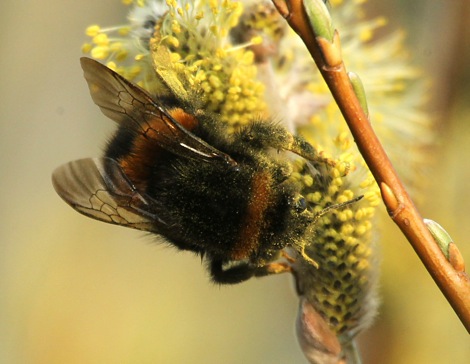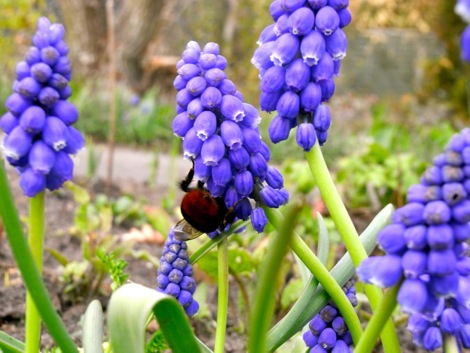Bumblebees feeding upon early spring flowers.
There are numerous books and web sites with information about bumblebee ecology, such as what flowers queen bumblebees will use at this critical time of the year for them. Flowers literally can be the life blood for queens and their success or failure in the Spring for newly emerged hibernating queens. The flowers can be crucial to the success or failure of their lives and colonies. Quite simply, no flowers for queens = no food = no bumblebees! So plant more flowers for the queens in your gardens, some of which are shown below. A photograph speaks more than words, so I am compiling photographs that people may find useful when selecting flowers and plants for queen bumblebees.
This article has been updated with a video Jan 15
Many bumblebee queens are unidentified in many cases as closer inspection was not possible either they flew off too quickly or simply were uncooperative in front of the camera!

white comfrey (Symphytum oriental) just after unidentified queen bumblebee had been feeding 30 March 2012
I saw at least 6 bumblebees feeding upon this blackthorn thicket but it was difficult to photograph. They all looked like the cuckoo bumblebee B. vestalis, although it is very early for this species and I can only assume that if they were cuckoos, the exceptionally warm weather we have just had brought them out of hibernation. I wonder how their early emergence will affect their success and therefore the ultimate success of their hosts bumblebees.
I have also seen queen carder bumblebees, B. pascuorum feeding on these flowers
Read more articles about bumblebees.
See the radical new design of bumblebee nest box, designed to protect them from pests and to provide them with a suitable nesting environment which allows safe viewing, as does my newly designed solitary bee box. Great for schools.
For more information and to help save bumblebees join the Bumblebee Conservation Trust at Stirling University.
Queen feeding upon a willow in 2012 and more wildlife photos from Roy & Marie with thanks!
Red tailed bumblebee feeding on muscari with thanks to Muromez.

















Recent Comments